For the 2025 school year, there is 1 public elementary school serving 345 students in Crab Orchard CUSD 3 School District. This district's average elementary testing ranking is 5/10, which is in the bottom 50% of public elementary schools in Illinois.
Public Elementary School in Crab Orchard CUSD 3 School District have an average math proficiency score of 17% (versus the Illinois public elementary school average of 26%), and reading proficiency score of 31% (versus the 30% statewide average).
Minority enrollment is 3% of the student body (majority Hispanic), which is less than the Illinois public elementary school average of 56% (majority Hispanic).
Overview
This School District
This State (IL)
# Schools
2 Schools
3,104 Schools
# Students
486 Students
1,223,907 Students
# Teachers
35 Teachers
89,922 Teachers
Student : Teacher Ratio
14:1
14:1
District Rank
Crab Orchard CUSD 3 School District, which is ranked within the bottom 50% of all 844 school districts in Illinois (based off of combined math and reading proficiency testing data) for the 2020-2021 school year.
The school district's graduation rate of 60-69% has decreased from 90% over five school years.
Overall District Rank
#482 out of 852 school districts
(Bottom 50%)
(Bottom 50%)
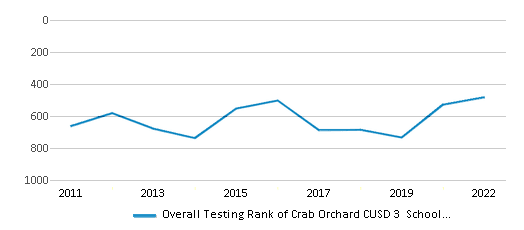
Math Test Scores (% Proficient)
(20-21)17%
28%
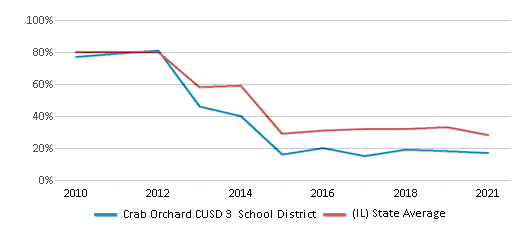
Reading/Language Arts Test Scores (% Proficient)
28%
30%
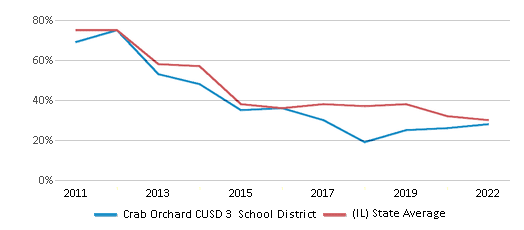
Science Test Scores (% Proficient)
60-64%
50%
Graduation Rate
60-69%
87%
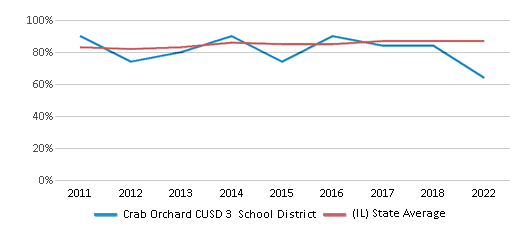
Students by Ethnicity:
Diversity Score
0.06
0.71
# American Indian Students
n/a
2,875 Students
% American Indian Students
n/a
1%
# Asian Students
n/a
66,874 Students
% Asian Students
n/a
6%
# Hispanic Students
3 Students
327,522 Students
% Hispanic Students
1%
27%
# Black Students
1 Student
200,526 Students
% Black Students
n/a
17%
# White Students
471 Students
537,078 Students
% White Students
97%
44%
# Hawaiian Students
n/a
1,010 Students
% Hawaiian Students
n/a
n/a
# Two or more races Students
11 Students
52,605 Students
% of Two or more races Students
2%
5%
Students by Grade:
# Students in PK Grade:
28
55,955
# Students in K Grade:
32
116,411
# Students in 1st Grade:
36
126,375
# Students in 2nd Grade:
39
167,370
# Students in 3rd Grade:
36
130,315
# Students in 4th Grade:
26
130,334
# Students in 5th Grade:
43
129,913
# Students in 6th Grade:
25
132,181
# Students in 7th Grade:
36
113,007
# Students in 8th Grade:
44
113,824
# Students in 9th Grade:
41
2,377
# Students in 10th Grade:
33
2,138
# Students in 11th Grade:
40
1,882
# Students in 12th Grade:
27
1,813
# Ungraded Students:
-
12
District Revenue and Spending
The revenue/student of $14,311 in this school district is less than the state median of $21,990. The school district revenue/student has stayed relatively flat over four school years.
The school district's spending/student of $14,992 is less than the state median of $21,244. The school district spending/student has stayed relatively flat over four school years.
Total Revenue
$7 MM
$41,381 MM
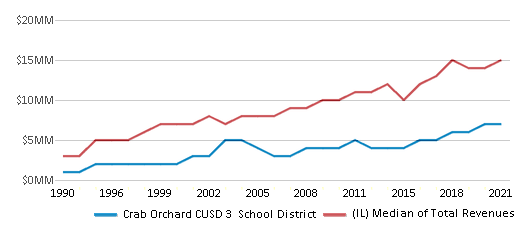
Spending
$7 MM
$39,976 MM
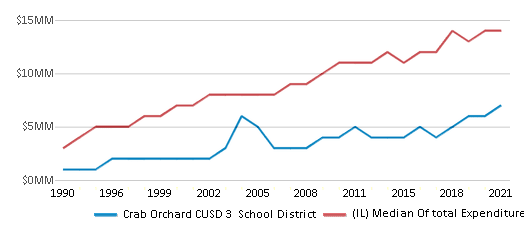
Revenue / Student
$14,311
$21,990
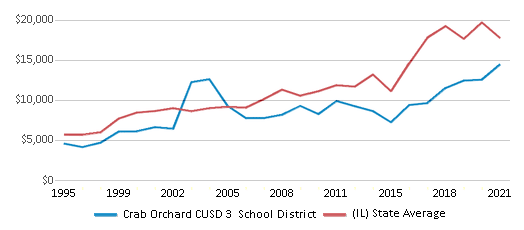
Spending / Student
$14,992
$21,244
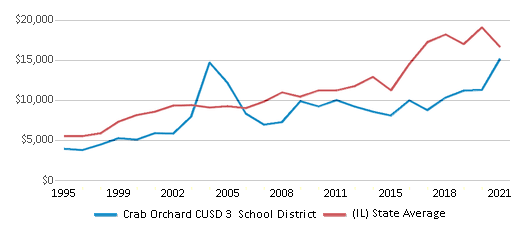
Best Crab Orchard CUSD 3 School District Public Elementary Schools (2025)
School
(Math and Reading Proficiency)
(Math and Reading Proficiency)
Location
Grades
Students
Rank: #11.
Crab Orchard Elementary School
Rank:
6/
Top 50%10
19189 Bailey St
Marion, IL 62959
(618) 982-2181
Marion, IL 62959
(618) 982-2181
Grades: PK-8
| 345 students
Recent Articles

What Is A Charter School?
Explore the world of charter schools in this comprehensive guide. Learn about their history, how they operate, and the pros and cons of this educational innovation. Discover key facts about charter schools, including admission policies, demographics, and funding, as well as what to look for when considering a charter school for your child.

10 Reasons Why High School Sports Benefit Students
Discover the 10 compelling reasons why high school sports are beneficial for students. This comprehensive article explores how athletics enhance academic performance, foster personal growth, and develop crucial life skills. From improved fitness and time management to leadership development and community representation, learn why participating in high school sports can be a game-changer for students' overall success and well-being.

February 05, 2025
Understanding the U.S. Department of Education: Structure, Impact, and EvolutionWe explore how the Department of Education shapes American education, from its cabinet-level leadership to its impact on millions of students, written for general audiences seeking clarity on this vital institution.





